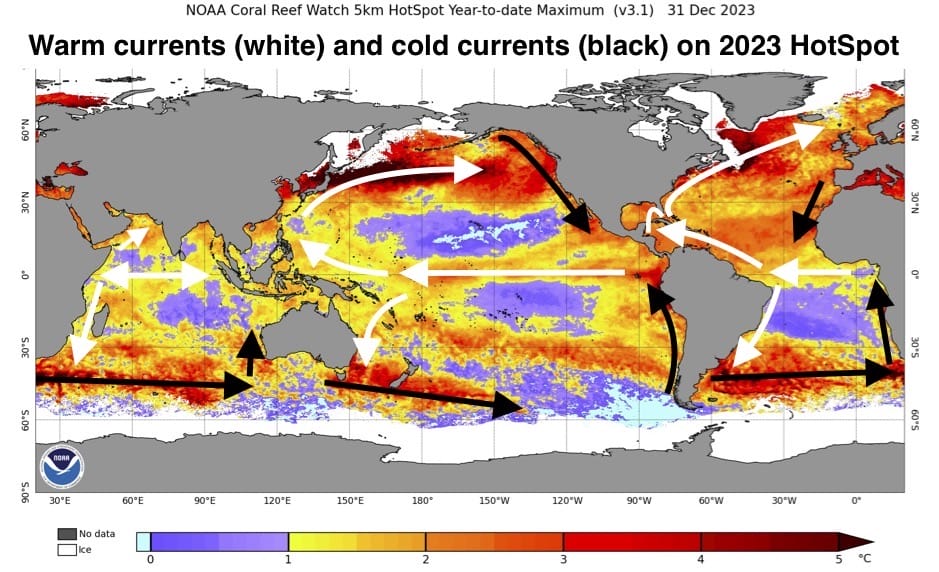Abstract
Coral reefs, the most sensitive ecosystem to high temperature, are on the precipice of mass extinction from global warming [1, 2]. 2023 was the hottest year in recorded history on land and in the sea, with dramatic and unexpected temperature increases [3, 4]. Coral Reef Bleaching HotSpot maps provide unique insight into global ocean circulation changes in response to greenhouse gas (GHG) forcing that caused dramatic global temperature rises [1, 2]. The highest excess daily air temperatures recorded in 175 countries, as well as the most prolonged excessive sea surface temperatures, were centered around Jamaica. 2023 marked the worst coral reef bleaching yet in the Northern Hemisphere, with the Southern Hemisphere poised to follow in early 2024. The HotSpot maps strongly suggest accelerated ocean poleward heat transport, slowdown in upwelling, and decreased deep water formation linked to sharply increased 2023 anomalous sea surface and air temperatures. The 2023 distribution of severe heat and bleaching follows both spatial patterns and temporal trends first shown from a baseline 1982–2001 global SST trend analysis [5]. Increased warming of both hot and cold ocean currents shows that horizontal mixing of tropical heat to the poles is accelerating, and that vertical mixing with cold deep water is slowing down, leading to increased ocean stratification, which will cause sea temperature to increase more rapidly and CO2 mixing with the deep ocean to decrease.
